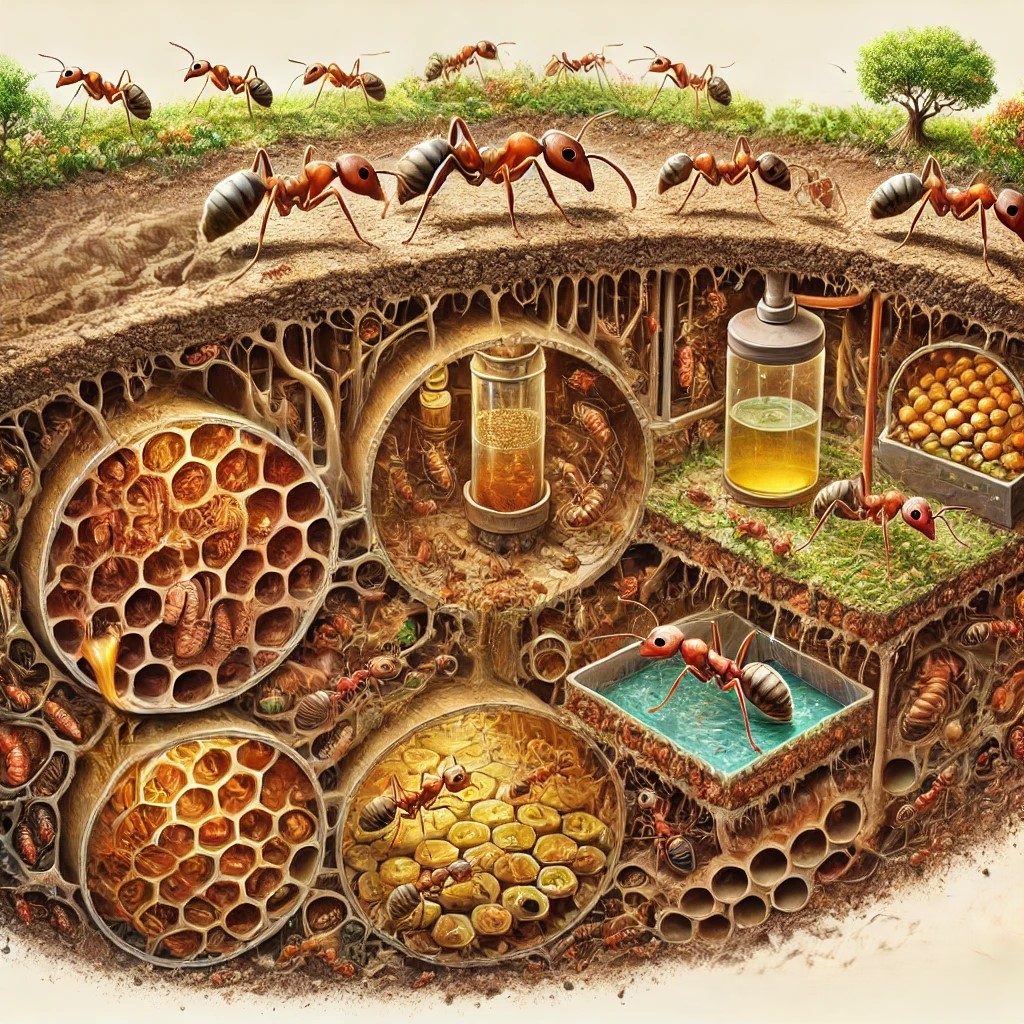
The food collection and distribution system in ants is one of the most fascinating and efficient aspects of their social organization. Below is an explanation of how this system works:
Food Collection: The Role of Foraging Workers
Foraging and Exploration:
The worker ants responsible for foraging are tasked with leaving the nest in search of food. These workers explore the environment in search of food sources, which may include dead insects, seeds, nectar, fungi, or any other available organic matter. Some species of ants also “farm” fungi within the colony, providing a constant source of food.
Use of Pheromones:
When a worker finds a food source, it returns to the nest, leaving a trail of pheromones along the way. This trail acts as a guide for other workers, who follow the chemical signal to the food source. The more food found, the stronger the pheromone trail, allowing more ants to reach the location quickly.
Collection and Transport:
Ants may work in groups to transport large food items or individually carry smaller pieces. Some ants have specialized mandibles for cutting and handling food. In species like leaf-cutter ants, workers cut leaves and carry them back to the nest to cultivate fungi, which serve as the primary food source for the colony.
Food Distribution: Communication and Efficiency
Storage and Distribution: Once food arrives at the nest, it can be temporarily stored in specific chambers within the nest. Some ants, known as “repletes” in species like honey ants, store sugar-rich liquids in their bodies, which expand and act as living food reservoirs.
Trophallaxis: Trophallaxis is a process where ants exchange food mouth-to-mouth. This method not only allows for the efficient distribution of nutrients within the colony but also serves to share chemical information through the pheromones contained in the food. In this way, all ants in the colony can stay informed about the nest’s needs and status.
Feeding the Brood and the Queen: Workers are responsible for feeding the queen and the larvae. The larvae, depending on their future caste (workers, soldiers, or queens), receive different types of food, primarily based on protein or fat content. The queen, being the main reproductive individual in the colony, receives a constant supply of food to maintain her high rate of egg production.
Cooperation and Adaptability
The food collection and distribution system in ants is a clear example of cooperation and adaptability within a colony. Each worker has a specific role, and communication through pheromones and trophallaxis ensures that all members of the colony are fed and that resources are used efficiently.
This system also allows ants to be extremely adaptable to their environment. They can change their foraging and distribution behavior in response to food availability or the changing needs of the colony, allowing them to survive and thrive in a wide variety of habitats.
